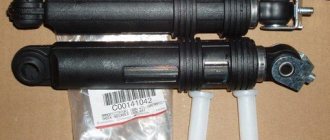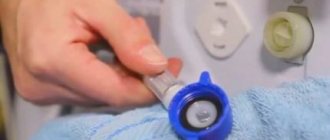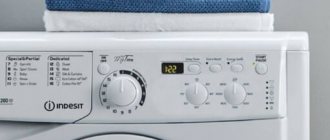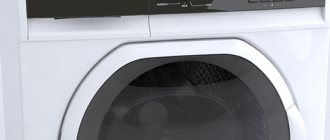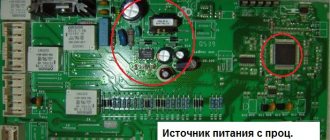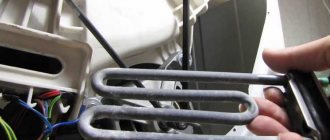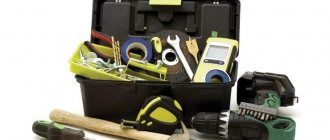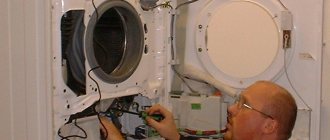There is no problem-free equipment - even premium class representatives fail. Malfunctions also occur in the Siemens dishwasher. According to consumers, they break down half as often as other brands.
What to do if a breakdown occurs? Pay attention to the operation of the Siemens PMM, diagnose the problem and fix it yourself. How to do this, read below.
Error codes for Siemens dishwashers are collected and described in detail in a separate article.
Typical breakdowns and error codes of a Siemens dishwasher
The design and principle of operation of the Siemens PMM is practically no different from other models. But some problems are especially typical for this brand. If an error code appears on the display, look at the instructions. The manufacturer indicates the meaning of the icons. And if you want to find out the details of solving the problem, the article “Fault codes for Siemens dishwashers” will help.
Here are the most common ones:
- E1 - water does not enter the tank.
- E7 - drying does not work.
- E9/E10 - the machine operates without heating.
- E15 - the Aquastop leakage protection has activated.
- E21/E23/E24 - water does not leave the tank, problems with the drain pump.
- E27 - incorrect network voltage.
How can you determine what is broken in the dishwasher if the code does not light up on the display? To do this, pay attention to the external manifestations of the breakdown. What users most often contact the service center with:
- The machine draws water slowly, the program freezes in the middle of the cycle . The reason may be a clogged filler path or a malfunction of the solenoid valve.
- PMM does not wash dishes well . The main problem is blockage. It is also possible that the circulation pump may break down or due to operating errors.
- The drain doesn't work . The problem is a clogged filter and a blocked pump impeller. Pump failure requires replacement.
- The program is not selected, the equipment is turned off . Problem with the electronic module.
Error codes for machines with a display and their elimination
Almost every Siemens dishwasher is equipped with a self-diagnosis function, thanks to which the device immediately stops working if a malfunction occurs and signals this using a special code. To decipher and further eliminate a problem or malfunction, it is enough to understand the meaning of a particular error code.
To check how serious the breakdown is, or whether it is just a failure in the system, it is enough to reboot the household appliance, which consists of several steps:
If after rebooting the code disappears, then you can continue to use the dishwasher as usual. If the error appears on the display again, you need to correctly decipher the code and try to fix the problem yourself.
So, below are the most common error codes that users of Siemens dishwashers encounter.
Along with error codes on the display, users sometimes encounter the fact that during operation the indicator where the faucet is drawn turns on and lights up. This indicates insufficient water supply. There may be several reasons: the filter mesh is clogged, or the water supply solenoid valve has failed. To fix the problem, you need to clean the filters with a brush and also rinse the hose.
It also happens that the display flashes, but the unit does not start working. The reason for this may be improper closing of the door or a loose fit. In this case, the door lock may malfunction or the door sensor may fail.
If any problems or failures occur, there is an excellent help - instructions, as well as contacting the service center.
Causes of breakdowns of Siemens dishwashers
The main causes of Siemens dishwasher breakdowns:
- The machine does not work, the display does not light up, or the program freezes. The reason may be that there is no voltage in the outlet. If you press the button and the program is not selected, the contacts may have burned out. How to connect the car? You need to disassemble the panel, clean or replace the contacts.
- The PMM does not take in water. Immediately check the presence of water in the water supply. Then inspect the inlet system: the reason may be a clogged inlet hose, flow filter, or inlet valve.
- Why is my dishwasher bad at washing dishes? Perhaps the water supply valve is clogged, then the water pressure is too low, so the dishes are difficult to wash. The nozzles on the rocker arm that sprays water can also become clogged. It is necessary to clean the system for normal water flow.
- The equipment turns on as usual, but water is not drawn in and washing does not begin. The reason is that the door is not tightly closed. How to adjust the door? It is enough to tighten the hinges of its fastening so that the lock fits normally into the hole.
- When problems arise with drainage, the entire drainage system is checked: filter, pump, hose. Parts are cleared of blockages. If the pump breaks, then the part is replaced.
- If the machine draws water, but the wash does not start, the problem is in the circulation pump. Needs diagnostics and repair.
- The dishwasher turns on the emergency shutdown. The reason is in the control module - in this case it is better to contact a specialist.
- The water does not heat up. You need to check the heating element and thermistor. The heater rings and if there is a malfunction, it is replaced. The thermistor also needs to be replaced.
- The dishwasher does not dry dishes. If your model has a drying function, then the cause of the breakdown is in the drying fan or its wiring.
You have figured out the main problems. Now you need to figure out how to troubleshoot a Siemens dishwasher.
Dishes remain dirty
Users often experience a situation where dishes remain dirty after a wash cycle. This unpleasant discovery does not necessarily indicate a malfunction. Other options are also possible.
- The wrong mode was selected. If the plates and pans are heavily soiled, and the long-term washing mode was not selected, then the machine simply could not or did not have time to remove grease and dirt, since fast modes use cold water for a short period of time.
- The dishes were not loaded into the machine correctly. All plates, pans, glasses, etc. must be in their place without creating overload. If this happened, then the operation of the sprayer could be blocked, or the compartment with detergents could be blocked by some particularly large dish;
- Little detergent was added, so there simply wasn't enough to wash the dishes.
If, after checking the described problems, there is still no identified cause of the problem, then things may be more serious. Problems may be the following:
- in the PMM there is low pressure due to clogged nozzles;
- The detergent valve does not activate;
- The circulation pump is broken.
First of all, let's deal with the nozzles that could be clogged with small debris or food debris. If this happens, the sprinkler holes will not spray water. To troubleshoot the problem, follow the instructions:
- open the PMM door;
- remove all dish trays;
- pull the rocker arms, which are located below and above the camera, towards you to remove them;
- Now you will need a toothpick, needle or cotton swab to carefully clean the rocker arm holes and also remove dirt from the seats.
For an ideal result, the rocker arms can be soaked in a solution of citric acid (again 100 grams per 2 liters of water).
The next step is to check the detergent dispenser valve. It should be cleaned regularly after use, otherwise the remaining tablets may tightly clog the hole. If the valve is clogged, it must be thoroughly cleaned.
- Open the dispenser compartment.
- Clean off all deposits.
- Wipe the compartment dry with a dry cloth or towel.
The final step is to replace the circulation pump. If the pump breaks, then water will stop flowing into the sprayers. It is the pump that forces water into the nozzles, and then drives it through the heater, so if it fails, then the operation of the PMM will be impossible. To replace, you need to carefully disassemble the dishwasher.
- Disconnect the machine from the electrical outlet and water supply.
- Remove all trays from the chamber.
- Carefully turn the device on its side.
- Remove the bottom.
- Now you need to loosen the pipe clamps and then remove them.
- The pump is located at the bottom of the dishwasher, remove it.
- If there is a malfunction, replace the part.
It is always much easier to keep complex equipment clean than to repair it later and remove large blockages. Rinse the PMM and its components so that you don’t have to waste time and money troubleshooting later.
Error codes for Siemens dishwashers
How are Siemens fault codes deciphered?
Error codes may appear due to serious damage to the dishwasher, or due to a failure in the system. It’s easy to fix, just reboot the equipment.
How to reboot the machine:
- unplug the dishwasher;
- wait 15-20 minutes;
- reconnect the equipment to power.
If the code is reset, it means nothing serious happened and you can continue working as usual. But if the error appears again, then you will have to understand its causes.
Sometimes even trivial problems can cause the dishwasher to stop working. Therefore, before calling a specialist, understand the reasons: perhaps you will carry out the repairs yourself.
| Error code | What does it mean | Reasons for appearance | How to fix the problem |
| E1 | Problems with water heating. | 1. The heating element does not function. 2. The control triac on the electronic board burned out. 3. The thermostat is faulty. 4. Incorrect operation of the pressure switch. | 1. Check the heater. To do this, the contacts of the heating element are dialed with a multimeter. 2. Conduct diagnostics on the control board. Repair or replace the element. 3. Inspect the temperature sensor. Install a new part if there is a malfunction. 5. Replacement of the pressure switch. |
| E2 | The NTC thermistor is not working. | The thermistor located inside the heater is faulty. | Inspect and replace the thermal sensor. |
| E3 | There is not enough water in the Siemens PMM tank. | Why did the breakdown happen: 1. The filling system is clogged: hose, filter, valve. 2. Inlet valve is broken. 3. The drain pump does not pump out water. It may be blocked. 4. Breakdown of the pressure switch. | How to do the repair yourself: 1. Check and remove blockage in the inlet hose. Disconnect it from the body and pull out the filter mesh. Clear the filter of debris. 2. Diagnostics of the inlet valve. 3. Inspection of the pump impeller. Elimination of foreign elements. 4. Changing the pressure switch. |
| E4 | The flow switch is faulty. | What caused the breakdown: 1. The switch is clogged and cannot direct flow. 2. The motor driving the switch does not work. | How to fix the situation: 1. Inspect the switch and remove the blockage. 2. Repair or replacement of the Siemens dishwasher motor. |
| E5 | There is too much water in the tank. | What's happened: 1. Incorrect data from the pressure switch. 2. The pressure switch tube is clogged. 3. Problems with the intake valve. | 1-2. Inspection of the pressure switch, cleaning the tube or installing a new tube. 3. Intake valve diagnostics. Its coils are checked with a multimeter. If there is a problem, you need to install a new element. |
| E6 | The turbidity sensor has failed. | The sensor monitors the degree of soiling of the dishes to save on additional rinsing. | A serviceable part is required to continue washing in the Siemens PMM. |
| E7 | PMM drying does not work. | The fan responsible for drying dishes does not function. | The fan needs to be diagnosed and repaired to resume the drying process. |
| E8 | There is not enough water in the tank to start the heater. | Due to the low pressure in the system, the circulation pump cannot circulate water normally. The heater does not turn on. The pressure switch may have failed. | Wait until normal pressure resumes. Install a new pressure switch. |
| E9 | Problems in the operation of the flow heater. | Why does the heating element fail: 1. As a result of a short circuit, the contacts of the heating element were broken. 2. The heater itself burned out. | What can be done: 1. Inspect the wiring of the heating element. Replace burnt elements. 2. Ring the contacts of the heating element to check functionality. |
| E10 | The machine runs without heating. | The integrity of the dryer is compromised. | The problem requires contacting a service center. |
| E11 | The dishwasher does not run a cycle without heating. | What happened: 1. The thermostat is faulty. 2. The sensor wiring is broken. 3. Problems have arisen in the operation of the control module. | Self-repair: 1. Installing a working thermostat. 2. Wiring repair. 3. Diagnostics of the electronic module. |
| E13 | The water temperature is too high when entering the system. | The temperature may be higher than normal if the equipment is connected to hot water. Otherwise the thermistor does not function. | How to proceed: 1. Check the connection. 2. Install serviceable parts. |
| E14 | Incorrect data from the flow sensor. | Despite the fact that operating pulses are sent to the circulation pump, the sensor does not see them. | The part needs to be checked and replaced. |
| E15 | The Aquastop leak protection has activated. | A leak has been detected in the dishwasher. The float floated up, signaling a leak. | It is necessary to locate the leak and stop the leak. What to inspect: 1. PMM tank. 2. Tightness of inlet and drain hoses, as well as their connections. 4. Hopper door seals. |
| E16 | Spontaneous collection of water into the tank. | 1. A mechanical problem with the inlet valve causes the diaphragm to not close. Therefore the flow does not stop. 2. The level sensor gives incorrect readings. 3. Foam level exceeded. | 1. Install a working fill valve. 2. Change the level sensor. 3. Remove excess foam. Use a different detergent or use a smaller amount. |
| E17 | Problems with water filling. | The flow control device has failed or there is a problem with the water pressure. | 1. The sensor needs replacement. 2. Check the pressure, wait until normal flow resumes. |
| E18 | What does the code mean: do not turn off the machine from the network. | The code tells the user that the cycle will end after draining, so there is no need to unplug the dishwasher. | |
| E21 | Problems with the drain pump. | 1. Blockage in the pump impeller. 2. Drain pump failure. | How to proceed: 1. To clear a clogged dishwasher, empty the hopper from the trays and remove the filter. Open the pump cover and remove anything that interferes with normal operation. 2. Test the pump contacts with a multimeter. Replace if faulty. |
| E22 | Error value: there is no contact between the pump and the main module. | What caused it: 1. Failure in the electronic module of the dishwasher. 2. The wiring or contacts between the board and the pump are broken. 3. The pump itself does not work. | 1. Diagnostics of the control board. 2. Inspect contacts for damage. Repair. 3. Checking the pump. |
| E23 | The drain pump is broken. | As a result of a short circuit, the pump winding broke. | It is recommended to contact a service center. |
| E24 | The Siemens dishwasher does not drain. | The drain hose is clogged, bent, or pinched. | Resume the normal position of the hose. Clean the blockage using special means. |
| E27 | Insufficient voltage for normal operation of the dishwasher. | Install a stabilizer for safe operation of the dishwasher. | |
| P0 | Factory functional tests during assembly |
Water does not flow into the PMM
Before starting work, make sure that it is not a system failure of the machine that is to blame. This could happen due to a power outage, or if the equipment was abruptly disconnected from the power supply. If there was no failure, then you can start checking the elements of the device.
- Turn off the device and unplug it from the network.
- Wait approximately 15 minutes.
- Turn the device back on.
If the error code does not disappear, then it is not a system failure that is to blame, so it is necessary to fix the problem.
If the machine stops drawing water, then one of the most common problems with your equipment has occurred, which happens with Siemens dishwashers. It can be determined by extremely slow water intake in any selected mode, as well as by freezing of the device.
After resetting the problem or rebooting the PMM, code E16 will appear on the electronic display, indicating that the intake tract is clogged. We are talking about a mesh filter behind the hose, which is necessary to prevent the entry of debris contained in tap water. Unfortunately, the company’s equipment is created with Europe in mind, where purified water is even used for washing dishes. Because of this, all the impurities from the Russian water supply completely clog the filter, and water stops flowing into the tank. You can fix this like this:
- close the supply inlet valve tightly;
- place an empty bucket or basin for water under the hose;
- disconnect the hose so that all dirty water drains out of it;
- rinse the hose thoroughly;
- There is a filter behind it that needs to be pulled out;
- remove all contaminants from the filter mounting hole;
- Finally, clear the mesh of any debris.
If the filter is too clogged with rust, a solution of citric acid (100 grams per 2 liters of water) in which the part should be soaked can help.
To prevent the malfunction from occurring again, you can install a flow filter in front of the PMM inlet hose. It is not necessary to buy an expensive one, as long as it can hold back dirt from the water supply.
Preparation for subsequent disassembly
The principle of assembly and disassembly for built-in and free-standing dishwashers is the same. The only difference is that the built-in ones do not have a removable top cover and metal walls. By the way, free-standing models of dishwashers can be considered partially built-in. With the top cover removed, they fit perfectly under the tabletop, but at the same time they retain their own (and not furniture) façade.
Before starting to disassemble the dishwasher, be sure to disconnect it from the power supply. Then we turn off the water supply. Now you can work without expecting surprises.
A small addition - machines from different manufacturers may have different configurations of fasteners. For example, at Bosch and Siemens all fastening screws are made in the form of an asterisk of a certain size.
It is necessary to prepare the appropriate tool in advance. Screwdrivers, pliers and a set of keys will also come in handy.
We remove everything that may interfere with disassembly. Disconnect the water fill and drain hoses. Open the door and take out the removable baskets for dishes and attachments. It’s clear that there shouldn’t be any dishes there. If you find any remaining water, remove it with a rag or sponge. During disassembly, water will still come out. Therefore, there is no need to remove funds to collect it far.
Now you need to move the machine to a place where there is enough space to disassemble and place the parts to be removed. Try to prepare boxes or bags for storing small parts and screws.
Otherwise, subsequent assembly may be delayed. It is advisable to have a camera or phone with a camera nearby. During the process of disassembling and disconnecting tubes or wires, it is better to capture how everything happened. Then the reverse assembly process will not be surprising.
Design and diagnostics
A dishwasher is a device designed for washing and rinsing various dishes (from dinner plates to pots, pans, etc.). The external simplicity of the design is very deceptive, because this device has a number of modules, regulators and other control mechanisms.
Photo - dishwasher
It can be built-in or free-standing. The built-in type technique is considered more convenient to use, since it does not require the allocation of additional space. But at the same time, its repair is somewhat complicated by the lack of quick access to structurally important parts. The diagram looks like this:
Photo - dishwasher design
In the drawing you see the standard device structure. On the control panel (1) you select and configure various operating modes; here you determine the temperature, flow rate and water pressure. The time is controlled using a timer (14). When the settings are made, you need to load the dishes into the washing chamber. After the door latch (15) slams shut, the contacts close and, like in a washing machine, water begins to flow. Depending on the design, the machine can be connected to a boiler or boiler, then warm water comes from a hot water hose (7), at the outlet of which there is an inlet valve (9), or the liquid can be heated independently using a heating element (12).
Photo - drainage
When the water is ready, it begins to be sprayed onto the dishes from above and below using spray nozzles (2,3). Their operation is controlled by a valve (4), which is also responsible for ensuring that there is not too much water in the chamber. When the dishes are washed, the soapy liquid is removed by the drainage hose (5), and the chamber is rinsed. The latch opens and the dishes can be unloaded. In addition, the diagram indicates:
- 6 is a power cable that is used to connect to the power supply network;
- 8 – filter, with the help of which the control and necessary purification of running water is carried out;
- 10 – motor;
- 11 – pump;
- 13 – gasket.
Photo - the principle of operation of the pump
This device is very similar to all modern dishwashers: Ardo, Elenberg, Beko, NEFF, Hansa, Candy and others. The system can be complicated by the presence of various control functions, for example, additional cleaning or blowing of dishes. Before starting repairs, be sure to review the user manual and operating tips from the manufacturer - it may not be dismountable.
Photo - reverse
Typical machine malfunctions:
- No water supplied. This could be either a pump problem or a clogged filter;
- The device turns on but does not work. Sometimes it happens that a Samsung, Hotpoint, Silanos SER or Indesit machine seems to turn on, but cannot start. The motor or pump could have shorted out;
- Doesn't turn on at all. The motor windings are burnt out, the power cord is damaged, there is no voltage in the socket;
- The water does not drain. The sewer, drain pipe is probably clogged, or the drain pump is faulty;
- Water leaks from the door during operation. This is definitely a broken door lock, which should jam and ensure the tightness of the container;
- No reverse. Reverse is a very important function of a dome and conventional dishwasher, in the absence of which it is necessary to repair the timer or replace the motor windings;
- The water is not heating up. A very common malfunction that indicates a breakdown of the heating element or a malfunction of the time sensor or timer. If the machine is connected to a boiler, then it makes sense to check its functionality;
- Dishes do not dry. The fan and motor are responsible for this function.
Typical faults
If the machine gives an error, then there is probably one of the following typical situations:
The washing program is stuck
While the dishwasher is operating, various errors may appear. Experts say the most common problem is that the washing program freezes. Which is why you need to switch the program, that is, reboot it. Many errors have codes, the decoding of which can be easily found in the instruction manual. Brief data is displayed directly on the display.
The control module program describes system failures. This allows the machine to perform self-diagnosis and alert you to various problems. Often the error does not disappear even if the device is turned off/on or rebooted. In this case, there is no choice but to determine the cause and eliminate it completely.
Sometimes during work several errors of different types accumulate. They do not interfere with washing and are not considered serious. But after some time, the dishwasher may malfunction or not start and stop switching programs. And this is dangerous because more serious breakdowns will appear in the future.
There is an overflow of water
If the PMM overflows water, this may indicate:
Sensor operation
Before you figure out how to cancel the program in the Bosch Silence Plus, SMV D RU, SMV EX R, SP, Supersilence dishwasher, as well as Electrolux ESL LO, Siemens, you need to study the operation of the sensors. Sometimes there is a malfunction in their work.
Let's look at the error codes using the Bosch Super Silence machine as an example:
The dishwasher is electrocuted
This is a rare problem, which indicates that the electric heating element is not broken, but there is a hole. It occurs due to long use, manufacturing defects or very hard water. Diagnostics and repairs are performed at the service center.
Common PMM malfunctions
It’s unlikely that anyone will want to just delve into complex technology. Disassembling a Bosch, Candy, Siemens dishwasher may be necessary to find and fix the problem. To make it easier for you to navigate, let's consider typical problems:
- Waste water is not drained. A common cause is clogging with food debris from dishes and small debris. First, the filter gets clogged, then the debris gets into the drain pump. This may cause damage. To check the parts, you need to remove the bottom of the PMM.
- No pressure. You need to check the pressure in the tap. The installation may not have been completed correctly.
- Water does not fill. The problem may be in the drainage system. We need to check everything step by step.
- The machine is noisy or humming. Shards from broken dishes could get into the drain, or the bearings of the pump or motor could wear out.
- Leak. The hose connections were broken, the hopper was damaged, and the Aquastop was broken. The equipment is subject to inspection.
Before starting disassembly, the machine must be properly prepared.
Errors of machines without a screen
Users of Siemens dishwasher modules that are not equipped with an LED display also sometimes encounter various types of malfunctions and functional failures. It is possible to determine the type of breakdown and eliminate the causes only if the problem is correctly identified.
Here are the most common mistakes.
In addition, after a long period of operation, users sometimes observe intense flashing of all indicators at the same time, which is a sign of an improperly closed bin door. It is recommended to reset all configured settings and restart the machine.
If nothing has changed, then the reason may be a malfunction of the door lock, loss of interaction between the door sensor and the control system, which requires specialist intervention.
Reduced washing quality
Also, quite often, after 1-1.5 years of operation, Siemens dishwashers begin to wash dishes worse. At the same time, the user adds the same detergent in the same amount to the cuvette, also stacks the dishes, selects the same washing program, in general, does everything as normal, but the quality of the wash becomes worse and worse. What is the cause of this annoying symptom? Strictly speaking, there are several reasons:
- weak water pressure;
- The detergent supply valve does not work well;
- the nozzles of the rotating rocker arm are clogged.
Low water pressure occurs due to the fact that the inlet valve flow filter is clogged.
We have already discussed how to clean it with your own hands in the previous paragraph. Therefore, we immediately move on to the second reason - the detergent supply valve is not working well.
The essence of the problem is as follows. Finish powder or tablets for the dishwasher are placed in a special compartment, from where they are removed gradually during the implementation of the washing program. If this compartment is not cleaned and rinsed, the valve will eventually begin to open and close poorly, and its holes will become clogged with dried remnants of semi-dissolved powder. As a result, during washing, the powder or tablet will dissolve less well, and the quality of dishwashing will only worsen.
The problem is easily solved. You need to make it a rule to wipe the detergent dispenser with a clean, dry cloth after each dishwashing, and then this problem will never visit you again. It is also a good idea to periodically use dishwasher cleaners, which will prevent dirt from accumulating in the dishwasher and remove any unpleasant odors.
The same thing happens with clogged rocker nozzles on a Siemens dishwasher. They must be cleaned once every 4-6 months, otherwise there will be no water pressure and the quality of washing will decrease. The injectors can be cleaned with a regular toothpick. Push it one by one into all the holes of the rocker arm, and then run a cold wash with dishwasher cleaner.
Problems with waste water disposal
We have considered the malfunctions associated with reduced washing quality, now we move on to problems with the removal of waste water. Why can water drain poorly from Siemens dishwashers? There are two main reasons: either there is a blockage somewhere in the drain path, or the pump has failed. We have discussed cleaning the dishwasher from clogs several times. This process is well described, for example, in the article Replacing and cleaning the dishwasher filter; we will not dwell on this point again.
In general, the dishwasher, like any equipment, must be looked after; if this is not done, quick breakdowns are inevitable. A pump breakdown is a much more unpredictable situation. You can take good care of your Siemens dishwasher and still end up in a similar situation. You can read how to replace a dishwasher pump with your own hands in the article of the same name; it’s not too difficult. But first you need to check the pump, maybe it’s not broken, but is it an electrical or electronic issue?
- We arm ourselves with an ohmmeter and remove the front bottom panel of the Siemens dishwasher.
- We disconnect the machine from the network and tilt it back a little (about 200).
- Now we can clearly see the pump mounted on the body of the circulation pump, set the ohmmeter to the minimum value, and then install its probes on the contacts of the pump.
- We measure the value, if the number is in the range of 1000-1500 - everything is fine, if less, the pump is faulty.
For your information! A faulty pump is not necessarily “silent” while the dishwasher is running. It may hum, but at the same time not fulfill its function of pumping water.
Problems with indicators, emergency shutdown
Another problem with modern models of Siemens dishwashers is spontaneous emergency shutdown, which is preceded by flashing indicators and sound signals. Moreover, if the dishwasher is unplugged and then turned on again, the problem repeats, it is completely impossible to wash the dishes. What is the cause of the problem?
Unfortunately, this breakdown is one of those that cannot be repaired with your own hands. If your car is under warranty, experts advise getting rid of it altogether. The fact is that such symptoms indicate a breakdown of the control module.
On Siemens, it is much more difficult to repair the control unit, since the board is sealed by the manufacturer into a non-separable module. For this reason, only some craftsmen undertake to repair it; mostly everyone refuses and suggests replacing the entire unit, which is almost half the cost of a new dishwasher. If the car is old, then it is better not to repair it at all if such a breakdown occurs, although it is up to you to decide.
In conclusion, we note that Siemens dishwashers are very, very reliable; their malfunctions are largely due to improper use by users. Therefore, if you take care of your dishwasher, it is very likely that it will work for many years without any problems.
Review of possible breakdowns
If diagnostics say that an error has occurred, it is important to ensure that it is not a random failure. In order to do this, you need to unplug the machine, wait a few minutes, then turn on the dishwasher again. If upon restart the error is still displayed, this means that you need to repair your Siemens dishwasher.
Errors E1-E6
If the display shows code E1, then the problem is related to the incorrect operation of the heating element. However, this error in Siemens machines can have various causes:
If such a breakdown occurs, you need to check the electrical characteristics of the corresponding components of the Siemens dishwasher. If possible, the used element must be replaced. If there are errors in the functioning of the control board, you must contact a specialist for repairs.
Error code E3 indicates that there is not enough water in the tank. Of course, it’s not difficult to replenish the supply, but the problem is that in this situation the cause was a breakdown of the Siemens dishwasher. There may be one of the following reasons:
When the water switch is faulty, error code E5 can be seen on the display.
In this case, the problem usually occurs due to one of the following reasons:
In the first case, it is enough to inspect the switch and remove the blockage. In the second, the situation is more serious - the engine has probably failed, which most likely needs to be replaced.
Sometimes it happens that there is too much water left in the tank. This is indicated by the E5 code, which will be shown on the display of the Siemens machine. Here are some possible reasons for this:
When a Siemens dishwasher displays this error code, you need to check for dirt. If they are found, it is necessary to clean them. To control the correct operation of the pressure switch, you need to check its electrical characteristics. If a malfunction is detected, this unit will have to be replaced.
Errors E7-E18
When code E7 is received, it means the dryer is not working. The cause is a non-functioning fan. In some cases it can be repaired, but sometimes it is better to buy a new one.
In order to start the washing process, it is necessary that the volume of water. Which is in the tank has exceeded a certain minimum level. If this does not happen, error E8 will be issued. One possible reason could be low water pressure in the plumbing system. However, we cannot exclude cases where the heating device or pressure switch of the dishwasher is faulty.
If the flow-through heater does not heat the water (error E9), this may, for example, mean that this unit is burnt out or there are problems with the wires. Which lead to him. In this case, you need to check the contacts and measure the electrical parameters of the heating element. If there are burnt wires, they must be replaced. If the dishwasher unit is faulty, it will need to be replaced.
If error E11 occurs, the Siemens machine starts the work cycle, but the heating element does not work. A malfunctioning thermostat can lead to this result. The problem can also occur when wires burn out or the control module malfunctions.
Sometimes a breakdown results in the heating element being dirty. This is indicated by code E12. The same diagnosis is also possible if a layer of scale forms on this unit. If this happens, to restore the dishwasher's functionality, it is enough to remove the contamination.
An alarm signal is a message that the water temperature in the Siemens dishwasher is too high (E13). This can happen not only due to a malfunction, but also as a result of an incorrect connection of the dishwasher to the hot tap. However, it also happens that the problem arose due to improper functioning of the thermistor.
E14 indicates that the water flow sensor is not working properly. In this case, it will need to be replaced.
If this Siemens model is equipped with the Aquastop leakage protection system, then it is possible that it has tripped (E15). In this case, you have to find the place where the leak occurred and fix it.
When water fills the washing tank spontaneously, this indicates a malfunction of the inlet valve. However, error E16 also has other possible causes:
You can try to remove the foam and see if the Siemens dishwasher starts working. If this is not the case, then you will have to replace the non-functioning unit.
E17 means that faults were detected during filling. This occurs when the flow sensor is faulty or when the incoming water pressure is too high.
Malfunctions related to water drainage
Other codes
Malfunctions and self-repairs
The most common problems with a Siemens dishwasher are the lack of water supply or drainage, poor washing quality and malfunctions of the electronic control unit. Minor faults can be fixed with your own hands. This will require a minimum of skills and tools.
No water supply
If the machine does not draw water or does so too slowly, you need to check that it is correctly connected to the water supply and that the supply tap is not closed. Another reason for the lack of a kit could be a clogged filter. German dishwashers are not designed to work with low-quality tap water. Over time, the filter mesh becomes overgrown with scale or rust. Cleaning is carried out as follows:
- the water supply tap is turned off;
- the inlet hose is disconnected;
- the filter mesh is removed and washed with a stream of water (if there are persistent contaminants, the part is soaked in a solution of citric acid mixed with water in a ratio of 1:20);
- the mesh is returned to its place, after which a flow filter is installed to capture contaminants;
- The inlet hose is connected to the machine body.
To ensure your dishwasher works well, both filters need to be cleaned every 3-6 months.
No water drain
If the device does not drain the water, the liquid remains in the chamber and causes it to stop working. The problem most often lies in a clogged drain filter. Such a malfunction can cause the machine to fill with water and the washing does not start. Troubleshooting includes the following steps:
- disconnecting the device from the power supply and turning off the water supply tap;
- removing trays and baskets from the chamber;
- unscrewing the drain filter located at the bottom of the housing;
- clearing the part from blockages by washing;
- inspection of the pump (to remove the part, press the cover until it clicks and pull the pump towards you);
- installing the pump and filter, connecting the drain hose.
The dishwasher may not drain water due to a broken pump. To check the functionality of this part, remove the bottom panel of the machine and unscrew the screws. The device is turned on its side and the voltage in the pump contacts is measured. The ohmmeter probes are applied to problem areas. If the number 1000-1500 is displayed on the screen, the pump is functioning normally. Cleaning the dishes from food residues and using high-quality detergents helps to avoid reoccurrence of the malfunction.
Poor wash quality
When using the machine for a long time, the quality of dishwashing deteriorates. The following reasons contribute to this:
- use of low-quality detergents;
- weak pressure in the water pipe;
- The detergent supply valve is clogged.
The following steps can help resolve this issue:
- restoration of normal water supply;
- cleaning the filter from dirt;
- regular cleaning of the compartment for cleaning products (the powder clumps, forming build-ups on the valve);
- checking the patency of the injectors (the part is unscrewed and removed from the body, the holes of the blades are cleaned with a toothpick).
How to repair a dishwasher
We will provide detailed instructions on how to start and repair the dishwasher. Let's start with the most common malfunction.
No water supply
The quality of tap water leaves much to be desired. Foreign-made dishwashers are not designed for such impurities in the water, so the filter mesh in front of the valve quickly becomes clogged. To reduce the number of blockages, install a flow filter in front of the mesh. Clean both elements periodically, then water will flow into the machine normally.
How to clean the system:
- Turn off the water supply.
- Disconnect the inlet hose from the PMM body.
- Remove the filter mesh and rinse under running water.
- If the dirt is heavily ingrained, leave the filter to soak in a solution of water and citric acid (dissolve 100 g in 2 liters).
- Install the items in reverse order.
No water drain
If there are problems with the drainage system, the water will not drain after washing, and an overflow may occur. Clogging also causes the program to stop. For example, you start the car, water fills, but the wash does not start.
How to disassemble and clean the system:
- Disconnect the machine from the power supply and turn off the water.
- Open the bin door and remove all trays and baskets.
- Unscrew the drain filter from the bottom.
- Unclog it by rinsing it with running water.
- How to unlock the pump? Use a sponge to remove any remaining water in the pump area.
- Press the pump cover until it clicks and pull it towards you.
- Inspect the pump for blockages. Wear gloves when cleaning, as the pump could become clogged with glass fragments.
To avoid blockages, remove food debris from dishes before washing. Also use special cleaning products.
The cause of the breakdown may be not only a blockage, but also a breakdown of the pump. How to check it:
- Remove the lower front panel of the machine. To do this, unscrew the mounting screws.
- Place the machine on its side or tilt it backwards.
- You need to measure the resistance at the pump contacts.
- Place ohmmeter leads on the pump contacts.
- The device is working properly if the number on the screen is 1000-1500. In other cases, replacement is needed.
Poor dishwashing
Over time, when using a Siemens machine, the quality of washing decreases. You do the usual load, pour in the detergent, but the dishes that come out aren’t very clean. Why does this happen:
- The water pressure in the water supply is too low.
- The product supply valve is clogged.
- The holes on the rocker arms are clogged.
What to do:
- Wait until normal water supply resumes.
- Check the mesh filter for clogging.
- After each cycle, clean the detergent drawer. Over time, the powder accumulates, dries on the walls, and the growths block the passage of the valve. Simply wipe the tray with a dry cloth after washing dishes.
- The dishwasher has two rocker arms for spraying water - upper and lower. Unscrew the top one and remove it from its seat. Pull the lower blade up and remove it from the body. Clean the blade holes with a toothpick under running water.
Don’t forget to take care of your equipment, then breakdowns will happen less often.
Dishwasher turns off
If the indicators on the panel flash randomly, an emergency shutdown occurs, the reason is in the control module. Diagnosing a module failure, much less repairing it, is something only a master can do. The design of the Siemens dishwasher makes this task more difficult.
The manufacturer enclosed the control board in a soldered unit. Most specialists refuse to repair it.
The module is one of the most expensive parts of a dishwasher. Therefore, if the machine is old, it is more profitable to buy new equipment than to change the module.
Carry out independent repairs of equipment only after the end of the warranty period. Use cleaning products and clean filters in a timely manner. Then you won’t have to deal with malfunctions and repair breakdowns at home.
What to do in case of serious damage
Significant defects are considered:
- power supply burnout;
- failure of transistors and fuses;
- malfunctions in the permanent memory unit.
Only an experienced technician can diagnose and replace the above parts. If the device is under warranty service, you need to contact the manufacturer's or seller's service center. Repair of Siemens dishwashers at home can only be carried out after the warranty period has expired.
- Built-in Siemens dishwashers 45 centimeters wide
- Dishwasher Electrolux ESF2400OK with compact body
- 3-in-1 stove with dishwasher and oven to save space in the kitchen
- Functional dishwashers Candy
PMM cannot be enabled
If the device does not turn on, then the most common cause of this problem is a device disconnected from the network. Inspect the power cable and socket with plug - they could be damaged, in which case they will have to be replaced.
If everything is normal with the connection, but the PMM turns off during the cycle, it means the electronic module is broken. The contacts on it could have oxidized or the tracks could have burned out. If this happens, then it is impossible to repair the module yourself - in Siemens technology, the board is part of a non-separable unit, and because of this, only a professional service center can help, where you need to urgently contact.
Interesting:
- Review of built-in dishwashers Siemens 60 cm
- Miele dishwasher errors
- Review of built-in dishwashers Siemens 45 cm
- Brands and brands of washing machines
- Which dishwasher is better - Bosch, Siemens,...
- Bosch dishwasher errors
Reader comments
- Share your opinion - leave a comment

